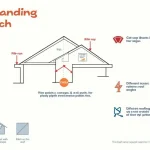Mortgage Insurance Claim Guidance
Is this tool helpful?
How to Use the Mortgage Insurance Claim Guidance Tool Effectively
To make the most of our Mortgage Insurance Claim Guidance Tool, follow these simple steps:
- Access the tool: Locate the tool on our website, typically found in the “Calculators and Tools” section.
- Provide additional context (optional): In the text area provided, enter any specific details or questions about your mortgage insurance situation or hurricane damage claim. For example:
- “My roof was severely damaged during Hurricane Ian, and I’m worried about my claim being denied. What documentation should I gather?”
- “I’ve been denied a claim for water damage caused by Hurricane Michael. What are my options for appeal?”
- Submit your request: Click the “Get Mortgage Insurance Claim Guidance” button to generate personalized advice.
- Review the guidance: Once processed, the tool will display tailored information about mortgage insurance claims, focusing on hurricane-related roof damage and potential denial scenarios.
- Save or share the information: Use the “Copy to Clipboard” button to easily save or share the generated guidance for future reference.
Understanding Mortgage Insurance and Hurricane Damage Claims
Mortgage insurance is a crucial component of many homeowners’ financial protection, particularly in areas prone to natural disasters like hurricanes. This tool is designed to provide valuable insights into the complexities of mortgage insurance claims, with a specific focus on roof replacement claims due to hurricane damage.
What is Mortgage Insurance?
Mortgage insurance is a type of insurance policy that protects lenders against losses resulting from defaults on mortgage loans. It’s typically required for homeowners who make a down payment of less than 20% of the home’s purchase price. There are two main types:
- Private Mortgage Insurance (PMI): Required for conventional loans with less than 20% down payment.
- Federal Housing Administration (FHA) Mortgage Insurance: Required for all FHA loans, regardless of down payment size.
Hurricane Damage and Insurance Claims
Hurricanes can cause significant damage to homes, with roofs being particularly vulnerable. When facing hurricane-related roof damage, homeowners often turn to their insurance policies for financial assistance. However, navigating the claims process can be challenging, especially when dealing with potential claim denials.
Benefits of Using the Mortgage Insurance Claim Guidance Tool
Our Mortgage Insurance Claim Guidance Tool offers several advantages for homeowners dealing with hurricane-related roof damage claims:
- Personalized Advice: By inputting your specific situation, you receive tailored guidance that addresses your unique circumstances.
- Time-Saving: Instead of sifting through countless resources, get concise, relevant information in one place.
- Increased Understanding: Gain clarity on the mortgage insurance claim process, potential pitfalls, and best practices.
- Improved Preparation: Learn what documentation and evidence you need to strengthen your claim.
- Strategic Approach: Develop a more effective strategy for dealing with insurance companies and potential claim denials.
Addressing User Needs: Navigating Mortgage Insurance Claims for Hurricane Damage
Understanding Claim Denials
One of the primary concerns addressed by our tool is the possibility of claim denials. Insurance companies may deny claims for various reasons, including:
- Lack of sufficient documentation
- Pre-existing damage or wear and tear
- Policy exclusions or limitations
- Missed deadlines for claim filing
- Disputes over the extent of damage
Our tool provides insights into these potential issues, helping users understand and mitigate risks of claim denial.
Documenting Hurricane Damage
Proper documentation is crucial for a successful claim. The tool offers guidance on best practices for documenting hurricane damage, such as:
- Taking detailed photographs and videos of the damage
- Keeping a log of all communication with insurance companies
- Obtaining written estimates from licensed contractors
- Preserving damaged materials as evidence
- Maintaining records of temporary repairs and associated costs
Navigating the Claims Process
The tool provides a step-by-step guide to filing a roof replacement claim due to hurricane damage:
- Review your insurance policy to understand coverage and deadlines
- Contact your insurance company promptly to report the damage
- Document the damage thoroughly
- Meet with the insurance adjuster and provide all necessary information
- Obtain multiple repair estimates from licensed contractors
- Negotiate with the insurance company if necessary
- Proceed with repairs once an agreement is reached
Practical Applications: Case Studies and Examples
Case Study 1: Successful Roof Replacement Claim
John and Mary Smith’s home in Florida suffered severe roof damage during Hurricane Irma. They used our tool to prepare for their insurance claim:
- Documented damage with 100+ photos and videos
- Obtained three written estimates from licensed roofing contractors
- Kept a detailed log of all conversations with their insurance company
- Followed the tool’s advice on presenting their case effectively
Result: Their claim was approved, covering $18,000 for a full roof replacement.
Case Study 2: Overcoming Initial Claim Denial
Sarah Johnson’s claim for hurricane-related roof damage was initially denied. Using our tool’s guidance, she:
- Gathered additional evidence, including weather reports and neighbor testimonials
- Hired a public adjuster to reassess the damage
- Filed a formal appeal with her insurance company
- Prepared a comprehensive appeal package as suggested by the tool
Result: Upon appeal, Sarah’s claim was approved for $12,500 in roof repairs.
Strategies for Appealing Denied Claims
If your mortgage insurance claim for hurricane-related roof damage is denied, our tool provides guidance on the appeal process:
- Review the denial letter carefully: Understand the specific reasons for the denial.
- Gather additional evidence: Strengthen your case with more documentation, expert opinions, or witness statements.
- Consider hiring a public adjuster: These professionals can provide an independent assessment of your damage.
- Prepare a formal appeal letter: Clearly address each reason for denial with supporting evidence.
- Explore mediation or arbitration: Some policies offer alternative dispute resolution options.
- Consult with a legal professional: In some cases, legal action may be necessary to resolve the dispute.
Alternative Sources of Assistance
Our tool also provides information on alternative sources of support for hurricane damage recovery:
- Federal Emergency Management Agency (FEMA): Offers disaster assistance programs for affected homeowners.
- Small Business Administration (SBA): Provides low-interest disaster loans to homeowners and renters.
- State-specific programs: Many states have their own disaster relief programs.
- Non-profit organizations: Various charities and non-profits offer assistance to hurricane victims.
Effective Communication with Insurance Companies
Our Mortgage Insurance Claim Guidance Tool emphasizes the importance of effective communication during the claims process:
- Be prompt and responsive: Respond to all inquiries from your insurance company in a timely manner.
- Maintain professionalism: Stay calm and courteous in all interactions, even if frustrated.
- Document everything: Keep detailed records of all phone calls, emails, and in-person meetings.
- Ask for clarification: If you don’t understand something, ask for explanation in writing.
- Be persistent but patient: Follow up regularly on your claim’s status, but understand that the process can take time.
Frequently Asked Questions (FAQ)
Q1: How long do I have to file a hurricane damage claim?
A1: The time limit for filing a claim varies by policy and state. Generally, it’s best to file as soon as possible after the damage occurs. Many policies require notification within 30-60 days, but always check your specific policy for exact deadlines.
Q2: Can I make temporary repairs before the insurance adjuster arrives?
A2: Yes, you can and should make temporary repairs to prevent further damage (e.g., covering a damaged roof with a tarp). Keep all receipts for materials and document the damage before making any repairs.
Q3: What if I disagree with the insurance company’s damage assessment?
A3: You have the right to dispute the assessment. Consider hiring a public adjuster for an independent evaluation, or get multiple repair estimates from licensed contractors to support your case.
Q4: Will filing a claim increase my insurance premiums?
A4: Filing a claim for hurricane damage typically doesn’t increase premiums, as these are considered “Acts of God.” However, multiple claims over time may affect your rates. Consult with your insurance agent for specifics.
Q5: What if my damage exceeds my policy limits?
A5: If your damage exceeds your policy limits, you may need to cover the difference out-of-pocket. In some cases, federal disaster assistance or other programs may help bridge the gap.
Q6: Can I choose my own contractor for repairs?
A6: In most cases, yes. However, some insurance companies have preferred vendors. If you choose your own contractor, ensure they are licensed and insured, and get the insurance company’s approval before starting work.
Q7: What if I can’t live in my home due to hurricane damage?
A7: Many policies include Additional Living Expenses (ALE) coverage, which can help pay for temporary housing and other costs if your home is uninhabitable. Check your policy for details on ALE coverage.
Q8: How can I prepare for future hurricane seasons?
A8: To prepare for future hurricanes:
- Review and update your insurance coverage annually
- Create a home inventory with photos and videos
- Implement home improvements to increase hurricane resistance
- Develop an emergency plan and prepare a disaster kit
- Stay informed about local evacuation procedures
Conclusion: Empowering Homeowners in the Face of Hurricane Damage
Dealing with hurricane damage and navigating mortgage insurance claims can be overwhelming. Our Mortgage Insurance Claim Guidance Tool is designed to empower homeowners with knowledge and strategies to effectively manage this challenging process. By providing personalized guidance, practical tips, and insights into the claims process, we aim to increase the likelihood of successful outcomes for those facing hurricane-related roof damage.
Remember, while this tool offers valuable guidance, each situation is unique. For complex cases or when facing significant challenges with your claim, consider seeking professional advice from public adjusters, insurance specialists, or legal professionals specializing in insurance claims.
By staying informed, prepared, and proactive, you can navigate the mortgage insurance claim process more effectively and focus on what matters most – recovering and rebuilding after a hurricane. Use our tool as a starting point in your journey to understand, prepare for, and successfully manage mortgage insurance claims related to hurricane damage.
Important Disclaimer
The calculations, results, and content provided by our tools are not guaranteed to be accurate, complete, or reliable. Users are responsible for verifying and interpreting the results. Our content and tools may contain errors, biases, or inconsistencies. We reserve the right to save inputs and outputs from our tools for the purposes of error debugging, bias identification, and performance improvement. External companies providing AI models used in our tools may also save and process data in accordance with their own policies. By using our tools, you consent to this data collection and processing. We reserve the right to limit the usage of our tools based on current usability factors. By using our tools, you acknowledge that you have read, understood, and agreed to this disclaimer. You accept the inherent risks and limitations associated with the use of our tools and services.







